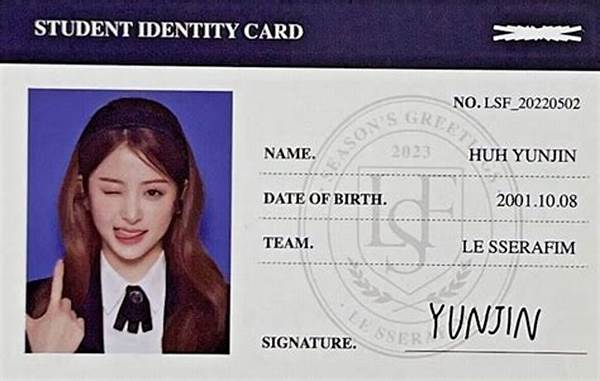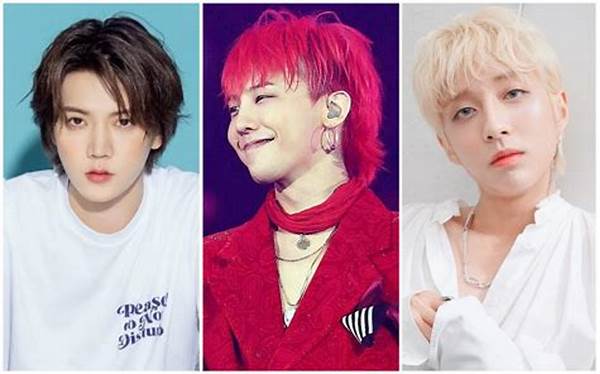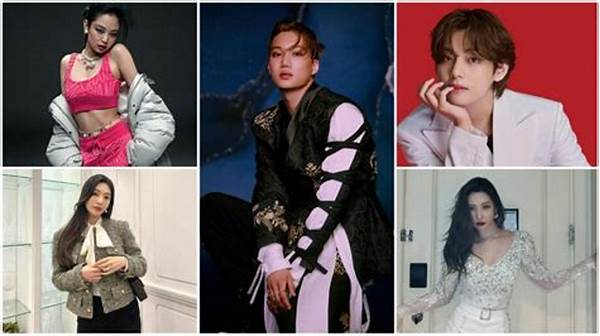Hey there, fellow K-pop aficionados! Let’s take a moment to appreciate just how much of a phenomenon K-pop has become worldwide. What’s even more fascinating, besides those catchy tunes and flawless choreography, is the intricate dance of image and identity in K-pop. This world of glitter and glam is not just about music—it’s about telling stories and creating personas that the audience connects with. Join me as we dive deeper into what makes these K-pop idols more than just performers.
Read Now : Bts Jimin Fashion Staples
The Dual Facets of Image and Identity in K-Pop
When we talk about image and identity in K-pop, it’s more than just visual aesthetics; it’s an art form. Each idol or group presents themselves with a unique image that’s carefully curated and marketed. Whether it’s the adorable ‘boy-next-door’ or the fierce ‘girl-crush’ concept, these identities allow fans to relate and connect on a personal level. However, this duality brings its own set of challenges. Many idols find themselves juggling the persona they show to the public and who they really are behind the scenes.
Over time, there have been several instances where idols reveal the pressures of maintaining their public image. Despite this, the industry’s ability to craft such distinct and relatable identities has played a huge role in catapulting K-pop to worldwide fame. The mix of their actual personalities interwoven with their constructed images offers a fascinating, if sometimes challenging, dynamic. The colorful tapestry of K-pop can be attributed to the different layers of image and identity each artist carries, creating a kaleidoscope of artistry that captivates fans globally.
So, the next time you watch a K-pop performance or MV, remember there’s a whole world built around image and identity in K-pop just waiting to be explored.
Key Elements Shaping Image and Identity in K-Pop
1. Concept Themes: Thematically rich concepts help set a K-pop group apart and contribute significantly to their public identity.
2. Fashion and Style: With cutting-edge fashion, idols craft a unique and memorable image that’s hard to forget.
3. Music and Lyrics: The music itself often tells a story, contributing to the group’s identity and message.
4. Social Media Presence: Idols engage with fans directly, adding layers to their public personas.
5. Cultural Influences: Incorporating Korean culture into their identity makes it both globally appealing and authentically local.
Navigating Personal Image and Identity in K-Pop
K-pop is a tough arena, and idols have to balance their public image with their personal identity. This balancing act often creates a tug-of-war for artists who strive to remain true to themselves while adhering to the expectations of fans and management. It’s essential for idols to maintain authenticity, even if it’s just a glimpse, to truly connect with fans at a deeper level.
In recent times, we’ve seen more idols showcasing their individuality beyond the crafted image, using platforms like V Live or social media to share unfiltered moments. This evolution has allowed fans to appreciate their idols for who they are as individuals too. Image and identity in K-pop may start as crafted concepts, but they often evolve into a mix of public persona and personal truth, making the bond between idols and fans unique and heartfelt.
Read Now : Influence Of K-pop On Gender Stereotypes
The Role of Agencies in Crafting Image and Identity in K-Pop
K-pop agencies play a pivotal role in sculpting an idol’s image and identity. Let’s face it, the meticulous crafting of a star doesn’t just happen overnight! Agencies not only groom the idols in terms of skills but also mold the very essence of their public personas. They carefully map out aesthetics, styles, and concepts to fit the group’s vision. This intricate process involves endless discussions, market research, and sometimes trial and error until they get it just right.
Here’s how it generally works: after training, idols are introduced with a well-considered image that reflects current trends but still stands out in a saturated market. This image is not static—it’s continually being polished and refined based on feedback and evolving group dynamics. Agencies also invest significantly in media training to ensure that idols can smoothly manage their public identities. The depth of image crafting goes beyond just the surface; it’s a strategic art, an elaborate game of chess played by industry experts. Image and identity in K-pop, therefore, are like living entities that adapt and grow in response to the environment.
The Personal Impact of Image and Identity in K-Pop
For idols, the crafted persona influences their daily lives, dictating how they interact with the world. Behind the flawless facades and enchanting performances lies the struggle to maintain the line between the personal and professional. It’s this ongoing negotiation between self-perception and public expectation that makes image and identity in K-pop such an intriguing subject. Each idol’s journey reflects a myriad of experiences, with some embracing the split as part of their artistry, while others find solace in the rare moments they can be themselves without the spotlight.
Ultimately, understanding image and identity in K-pop means delving into the hearts of the idols themselves. What goes beyond stage outfits and catchy slogans is their sincere passion and relentless perseverance to present art that resonates. As fans, supporting them means acknowledging not just the polished exteriors but the genuine individuality peeking through. This mutual understanding helps balance the scale, offering a fulfilling and empathetic fan-idol relationship.
A Changing Landscape: Image and Identity in K-Pop
K-pop is ever-evolving, and with it, so are the concepts of image and identity. We see a shift towards more authentic expressions with idols using platforms to share their creative processes, struggles, and triumphs. The conversation around mental health in the industry also highlights the importance of personal identity amid constructed images. As the lines blur between the real and the orchestrated, idols and fans alike navigate these waters to find a sweet spot where art and authenticity harmoniously exist.
This evolving landscape reflects broader societal changes, mirroring a global culture increasingly valuing authenticity over perfection. As K-pop continues flourishing in diverse markets, its approach to image and identity adapts, pushing boundaries and redefining norms. It’s more than just entertainment; it’s a reflection of changing paradigms where personal stories and public personas beautifully intertwine. This is the era of K-pop where image and identity are not just crafted but deeply felt and experienced together with the fans.
A Closer Look at Fan Interaction and Identity in K-Pop
Fan interactions in K-Pop go beyond simple fandom—they form part of an idol’s identity. Through social media, fan meetings, and exclusive content, the connection strengthens an idol’s image, allowing for a richer, more personal interaction. This unique relationship between idols and fans adds an extraordinary dimension to image and identity in K-pop. As idols open up about their personal lives and share sincere moments, fans reciprocate with unwavering support, creating a cycle of mutual respect that cements their shared journey.
In summary, image and identity in K-pop are a multilayered, fascinating exploration into the world of music, culture, and personal expression. It’s a dynamic interplay between what’s crafted and what’s real, where fans walk alongside idols as they shape not only their careers but also the legacy of K-pop as a global movement. So here’s to the melodies, the personas, and the stories that make this genre truly unforgettable!


